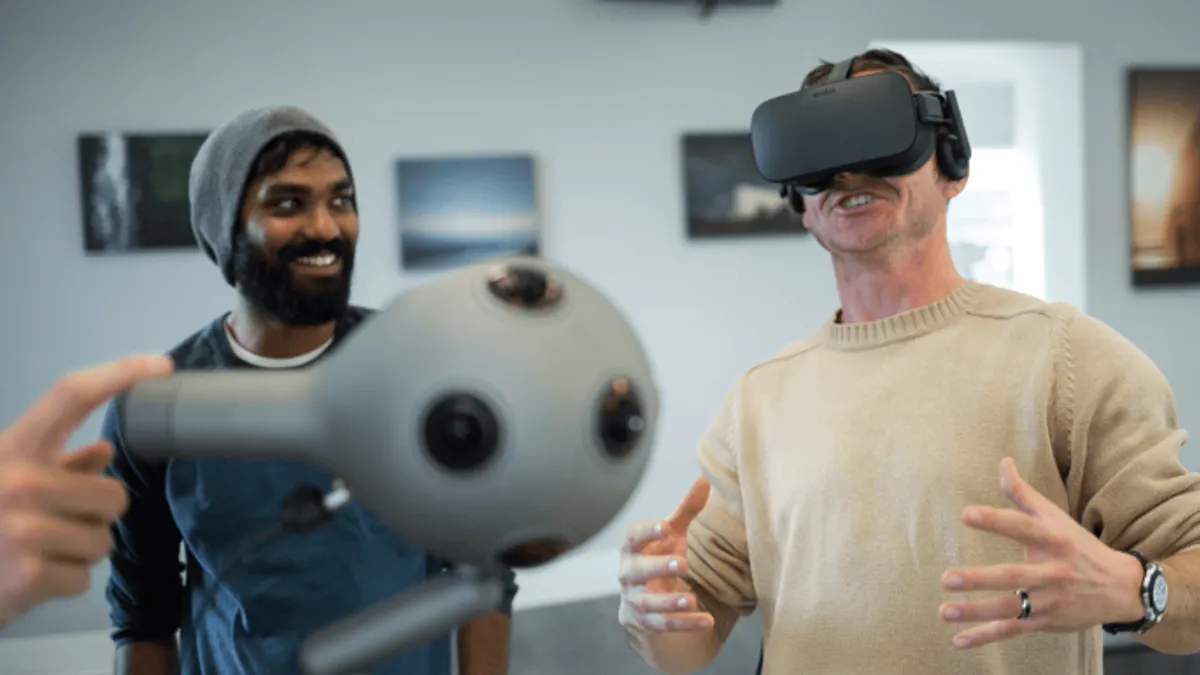Dive Brief:
- About half of universities and colleges have deployed virtual reality in some form on campus, but there will be more demands to develop it — and with the technology improving and prices falling, institutions will find it easier to move ahead, according to a survey by Internet2, an advanced technology higher education consortium. The survey, which was reported on by EdTech, showed that of the total, 18% of institutions have “fully deployed” VR.
- One expert introducing the survey results noted that increasingly K-12 schools are using the devices, and that most of the incoming freshman class will have had experience with the technology – so students will expect access to it in college.
- He noted that institutions are establishing the facilities and acquiring the technology and figuring out how to implement VR, though usually it follows – but elaborates on – current practices so it can be readily adapted to the curriculum. Adequate wireless network capacity is the biggest issue institutions may face.
Dive Insight:
Colleges are using the devices in a variety of ways – from allowing medical students to experience sophisticated experimentation without expensive equipment to letting admissions prospects tour college facilities virtually.
Others are exploring how the devices can be used to create “virtual stacks” in the library or take tours anywhere in the world to study anything from art to archeology. Experts say the technology is being deployed in architecture programs, in the arts and in healthcare fields. Nursing, occupational and physical therapy and veterinary technology students at Stanbridge College use virtual reality devices to enhance training in anatomy, pain management and infection.
Experts say colleges must also consider how the private sector may take the lead and fill a vacuum in training on VR if higher education doesn't, and how students may need to be prepared for jobs where it is used.
Some experts note that information about the value of VR has not yet been fully explored, but university educators should engage in its development – do their own research and collaborate with others who are exploring the technology.
Finally, headsets are not inexpensive — about $600 and $3,000— not including the expense of software or graphics cards, although the Google Cardboard headset, which adapts users' smart phones, can be purchased for $7.














